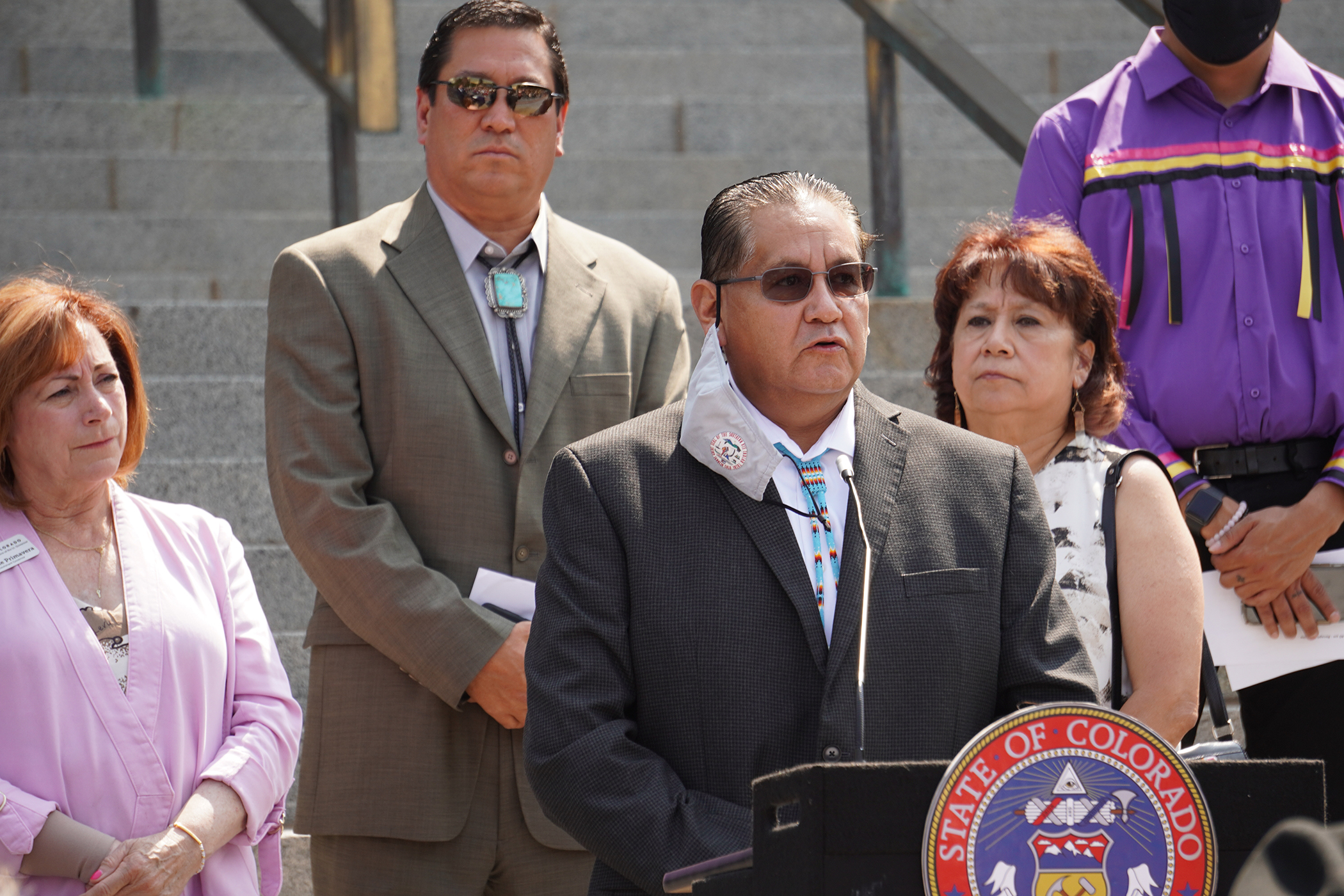Colorado Governor Jared Polis signed an Executive Order, Wednesday, Aug. 18 that rescinded two, 150-year-old proclamations that were put in place by former Territorial Governor, John Evans in 1864. Tribal leaders from Colorado and Oklahoma were in attendance of the historical event outside of the State Capitol Building in Denver.
“The 1864 Proclamations were never lawful because they violated established treaty rights and federal Indian law.” reads the Executive Order B 2021 002. “Further, when Colorado became a state, they never became law, as they were superseded by the Colorado Constitution, United States Constitution, and Colorado criminal code. Yet, the 1864 Proclamations have never been officially rescinded. They therefore remain as a symbol of a gross abuse of executive power during that grave period in our state’s history.”
The official repeal of the 1864 Proclamations help honor and acknowledge Colorado’s true history. “It was an honor to attend and represent the Tribe on the steps of the Colorado Capital as Governor Polis rescinded the over 150-year-old proclamation that made it legal to use physical violence against Ute people and other Natives who were considered hostile as they were protecting their families and homelands.” Southern Ute Tribal Chairman, Melvin Baker stated. “Shedding light on these policies will bring about much needed change, but also create awareness on the true correct history of the State of Colorado and the United States.”
The proclamations were set in place originally to encourage non-native men and families to pursue “hostile Indians” and even offered rewards for the killing of American Indians. This ultimately led to the Sand Creek Massacre that killed hundreds of Cheyenne and Arapaho Indians.
This massacre is often referred to as a horror story, because of the unprovoked attack on over 500 peaceful Cheyenne and Arapaho people; the attack was led by Colonel John Chivington and about 700 Calvary troops through the Big Sand Creek of Colorado on Nov. 29, 1864. The tribal leaders of the time were under the impression that their people were protected by the government. The cavalrymen ignored the American Flag and the white flags that were flying as a sign of friendship and proceeded to open fire on the camp.
“We remember the past in order to acknowledge the truth surrounding our state’s beginnings as we hope to imagine and create a better future and to work towards healing our state together. Only by revealing and acknowledging the truth can we hope to move forward together as partners in creating a Colorado for all, a place where everyone feels welcome, safe, and has the opportunity to thrive,” Lieutenant Governor and chair of the Colorado Commission of Indian Affairs, Dianne Primavera stated. “The Colorado Commission of Indian Affairs is looking forward to many more positive opportunities to see the Tribes and the AI/AN communities come together in solidarity, and we are thankful for all of the actions that the Tribes and the AI/AN communities have taken to make this Executive Order possible.




